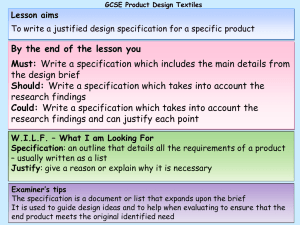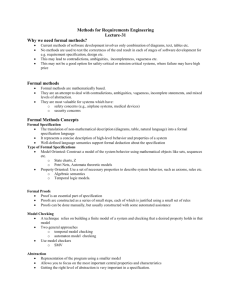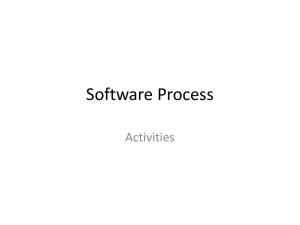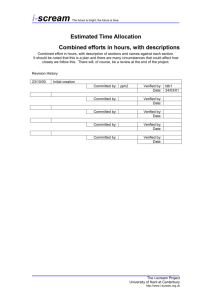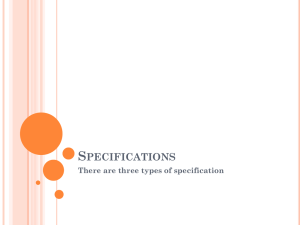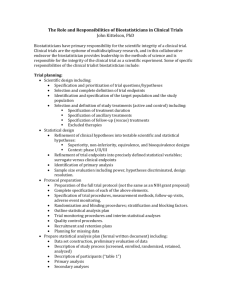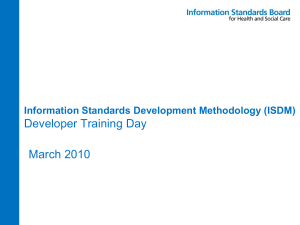Introduction Design and technology
advertisement
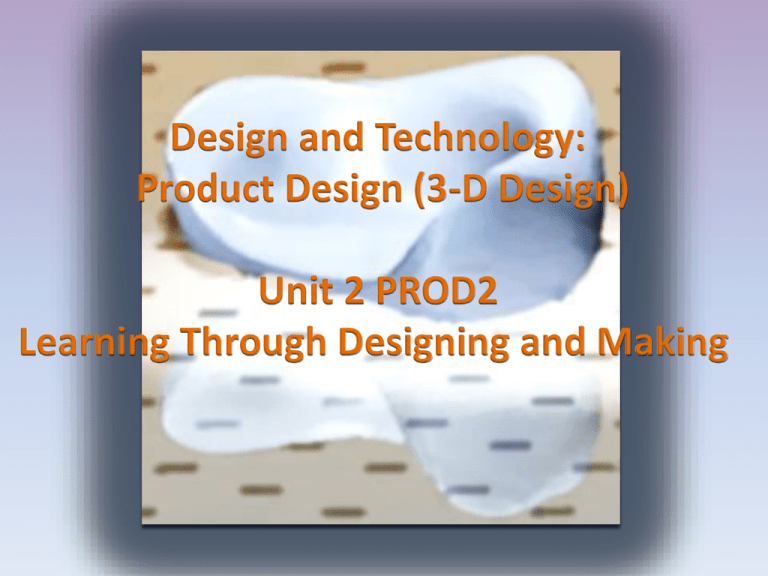
Design and Technology: Product Design (3-D Design) Unit 2 PROD2 Learning Through Designing and Making Criterion 1 Mark Band Investigation and Clarification of Problems 7-8 Comprehensive, organised range of sources of information including relevant practical investigations, taking into account current trends, available technologies and the needs of the client. Perceptive analysis of information. Comprehensive specification, well reasoned and based on research and investigation. 5-6 Wide range of sources of information, organised and supported by relevant practical investigations, taking into account current trend, available technologies and the needs of the client. Good analysis of information. Well-explained specification which reflects research and investigation. 3-4 A range of sources of information, supported by relevant practical investigations, with some consideration of available technologies and the needs of the client. Some analysis of information. A specification which is a list of points with some explanation. 2 0-1 Narrow range of sources of information supported by relevant practical investigations with little awareness of available technologies or the needs of the client. Little analysis of information. The specification is a range of points with one or two points explained. Minimal sources of information and little awareness of the needs of the client. The specification identifies a few obvious points which are stated simplistically. Starter: To be able to analyse the Design Brief. Introduction to the project and the exam board requirements. All information needed can be found on the VTLE – Product Design - Yr. 12- Unit 2 PROD2 Learning Through Designing and Making. To be able to produce three pieces of relevant research. Activity: Analysis of the Design Brief. To be able to interpret the exam board criteria and to be aware of how to find it on the VTLE. All students will show some understanding of the design brief through analysis. They will produce three pieces of research. Most students will show a sound understanding of the design brief through a detailed analysis. They will produce three pieces of research which lead to a specification which fulfils the design brief. Some students will show a detailed and perceptive understanding of the design brief through an intuitive and detailed . They will produce three relevant and concise pieces of research which will lead to a specification for a product which will fulfil the design brief. Your analysis should show that you understand the Design Brief and how you will carry out the task. It will also help you set up your research. All the above must include as much detail as possible, showing your train of thought and intuitive judgements on how the project will start and progress. These points and questions must be recorded in a concise format, this can be done as a spider diagram or a bullet pointed list. Plenary: Discussion on findings. Producing a research planner. Homework: Complete 3 pieces of research. Present your work on A3. Key words:Analysis. Perceptive. Concise. Specification. Research. Detail. Relevant. Judgement. *Remember you are marked on your spelling and grammar and the use of correct technical terms* Your task is to Design and Make a scale model of a new chair. Your focus group is professionals aged 25-45 in the earning bracket of £25,000 - £35,000 . Your client wants a contemporary product based on a 20th Century Designer to fit in with a modern living environment. The product needs to be practical, comfortable and affordable. However, it must have a ‘stand out’ unique quality that gives it a iconic look. Before you can start designing and making a product you have to make sure you understand exactly what you are being asked to do. Read through the Context and the Task carefully. Then ask yourself:‘What knowledge and skills do I already have that will help me to tackle this project?’ ‘What information will I need to find out and what skills will I need to acquire?’ (These become your research tasks). This is called *analysing the task* Some research tasks which are carried out could cover several of the analysis questions. Careful choosing of the research will result in thorough and concise results. Research at this stage should be a mixture of primary and secondary. Do not download tons of information from the internet as this will not be marked. The task analysis needs to be set out in the form of either a Spider Diagram or a Bullet Point list. n.b. The research you carry out must answer the questions set up by your task analysis questions and will lead to a Specification for a product which will fulfil the Design Brief. What knowledge and skills do I already have that will help me to tackle this project? What information will I need to find out and what skills will I need to acquire? These must be done in the form of a bullet pointed lists. This will keep it concise. What I already know. What do I need to find out? Possible Research Tasks Client Profile and Survey Existing Products Anthropometrics and Ergonomics 20th Century Designers



